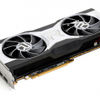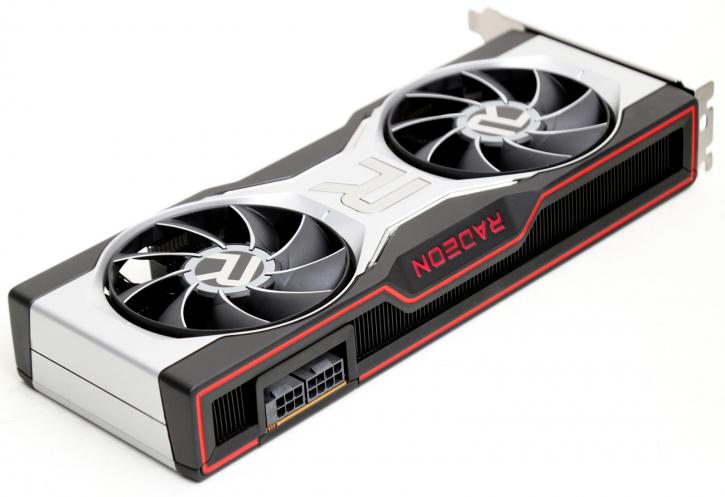Introduction
AMD Radeon RX 6700 XT reference review
With prices starting at USD 479, AMD releases their 'mainstream to high-end' Radeon RX 6700 XT. A product that is to battle with the RTX 3060 Ti and 3070 from team green. Armed with 12GB of graphics memory, will it offer enough performance for a graphics card with such a massive price tag? This review starts with an overview and analysis; we'll be discussing the Radeon Series 6700 XT from AMD that stems from the RDNA2 architecture. It certainly took a while for AMD to release it; back in July 2019, AMD announced the NAVI-based Radeon RX 5700 and 5700 XT., a product series that ever since has been well respected. The 5700 series does offer some good performance. However, from there onwards, things were pushed back for various reasons like all COVID-19 related, in the world of graphics technology; also a new dynamic was added, Raytracing. Or, I should say DirectX Raytracing (DX-R). NVIDIA was pioneering two years ago with their RTX 2000 series already, and AMD made the call to delay that for the original Navi GPU. As the graphics landscape changed somewhere done the line, so this the roadmap for AMD change. Microsoft and Sony consoles embedded with AMD technology revealed that Ray tracing was going to be supported. And that did set the trend for the desktop graphics card we see announced today as well.
Radeon RX 6700 XT
AMD announced the card at their 'Where Gaming Begins epi3' presentation (March 3, 2021). As earlier indicated, only one NAVI22 SKU is released at this time. The Radeon RX 6700 XT. A Non-XT version may follow at a later date. The RX 6700 XT will be commercially available starting on the 18th of March 2021. Reference cards and customs cards launch on the same date. Navi22 XL, the GPU that resides on the 6700 XT graphics card series, has been paired with 12 GB of GDDR6 graphics memory. Armed with RDNA2 architecture and 40 CUs, this offers 2560 shading processors, the same amount as the Radeon RX 5700 XT, the architecture, however, is much faster. The memory makes use of a 192-bit wide memory bus. The reference boards use 11 phases of power. It will have a base clock of 2321 MHz, a game clock of 2424 MHz, and a boost clock of 2581 MHz. The graphics card features 160 TMUs, 64 ROPs, and 40 Raytracing cores for raytracing hardware acceleration. The graphics card is equipped with a high-quality PCB with an 8-pin and 6-pin power connector. The sanctioned TDP is listed at 230W.
| Desktop | ||||||||
| GPU | Stream Processors | RT Cores | Max Boost GPU clock (MHz) | RAM type | RAM volume (GB) | RAM bandwidth (GB/s) | RAM width | TDP (watts) |
| Radeon RX 6900 XT | 5120 | 80 | 2250 | GDDR6 | 16 | 512 | 256-bit | 300 |
| Radeon RX 6800 XT | 4608 | 72 | 2250 | GDDR6 | 16 | 512 | 256-bit | 300 |
| Radeon RX 6800 | 3840 | 60 | 2105 | GDDR6 | 16 | 512 | 256-bit | 250 |
| Radeon RX 6700 XT | 2560 | 40 | 2581 | GDDR6 | 12 | 384 | 192-bit | 230 |
| Radeon RX 5700 XT | 2560 | 1605 | GDDR6 | 8 | 448 | 256-bit | 225 | |
| Radeon RX 5700 | 2304 | 1465 | GDDR6 | 8 | 448 | 256-bit | 180 | |
| Radeon VII | 3840 | 1400 | HBM2 | 16 | 1024 | 4096-bit | 300 | |
| Radeon RX Vega 64 | 4096 | 1247 | HBM2 | 8 | 484 | 2048-bit | 295 | |
| Radeon RX Vega 56 | 3584 | 1156 | HBM2 | 8 | 410 | 2048-bit | 210 | |
| Radeon RX 590 | 2304 | 1469 | GDDR5 | 8GB | 256 | 256-bit | 185 |
All 6000 cards released by AMD and their board partners will be fitted with GDDR6 memory; the 6700 XT, however, sees 12 GB of it. And that means a more bandwidth-limited 192-bit wide memory bus. However, AMD has got that trick up their sleeves architecture-wise, as they added an L3 cache into the GPU. All RDNA2 based graphics processors are DirectX Ultimate compatible, a naming placeholder for extra feature levels such as DirectX Raytracing (DXR), Variable Rate Shading (VRS), Mesh Shaders, and Sampler Feedback.
The Radeon RX 6700 XT is to cost a rather extravagant 479 USD as a base reference product. Thus, you can expect board partner cards with custom designs and cooling to sit well above the 500 USD marker. At the time of writing, we cannot make any sense of price levels as to where NVIDIA increases pricing; AMD now follows suit. Unfortunately, prices are now at such ludicrous levels that people will flee to consoles far more easily. Traditionally the Series Radeon RX x700 should have been a mainstream to high-end product. Coming from the last-gen 5700 XT, AMD again increased pricing by 80 USD. By doing so, they priced their product close to the GeForce RTX 3070. However, with AMD's Raytracing performance and lack of any form of DLSS/MLSS, we can already share that the pricing is the biggest culprit of this product series. Anyway, onwards into the review, then, let's start with photos and a quick architecture overview.


